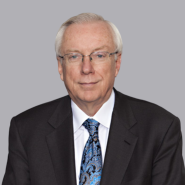Show Me the Money – USPTO Fee Proposals Include Fee Provisions to Impact Applicant Behavior
- June 19, 2023
- Article
Associated People
The USPTO has opened the discussion on its fees to be effective in 2025. While the PTO is to be applauded for getting ahead of the fee curve, unfortunately some proposed fees are not only outrageous but beyond the PTO’s fee setting authority. The PTO in its fee setting objectives listed as one objective to “Promote efficient operations and efficient filing behaviors.” [Emphasis added]. The PTO’s executive summary quoted in this post is found here along with other supporting documentation. The PTO’s fee setting authority is not unbounded but restricted by several laws. First, the House Report describes the fees in 35 U.S.C. § 41 as the reference point for future adjustments. It provides in part for these fees for over 3 independent claims with a column added for 45% inflation since 2011[1]:

However, the proposal is for $200 for each claim over 20 or a 100% increase and a $600 fee for each independent claim over 3 or a 25% increase. The PTO did not, in its submissions, provide any cost data for FY 2022 or any other previous FY. In its executive summary the PTO described the objective to “Encourage applicants to be more efficient in the number of claims filed.” There is nothing in the PTO’s fee setting authority to use it to influence applicants’ habits. The fee setting provision of the AIA provides:
(1) IN GENERAL.—The Director may set or adjust by rule any fee established, authorized, or charged under title 35, United States Code, or the Trademark Act of 1946 (15 U.S.C. 1051 et seq.), for any services performed by or materials furnished by, the Office, subject to paragraph (2).
(2) FEES TO RECOVER COSTS.—Fees may be set or adjusted under paragraph (1) only to recover the aggregate estimated costs to the Office for processing, activities, services, and materials relating to patents (in the case of patent fees) and trademarks (in the case of trademark fees), including administrative costs of the Office with respect to such patent or trademark fees (as the case may be). [Emphasis added]

Note that the second and, especially, subsequent requests would exceed the PTO’s cost and represent an 80% increase. It is important to remember that the objective of the fees was to recover 50% of the PTO’s operating costs from pre-issuance fees and 50% post issuance.
Another example of price gouging is the proposed PTE fees:

Note that the proposed fee exceeds the PTO’s cost by a factor of 2.6. The initial interim extension fee does not include the application fee which is separate and must be filed with the interim extension. As for the interim extension fee, the PTO’s cost figure seems high. The fee for a redetermination might be fair if the redetermination simply confirmed the correctness of the initial one, but why should the patentee pay a fee if the PTO performed the determination incorrectly.
Another example of the PTO’s greed can be seen in the terminal disclaimer fee where it is determined by when the disclaimer is filed:

The executive summary justifies the new fees because the sliding fee will prompt early filing of terminal disclaimers, ignoring the fact that many double patenting rejections are in error. It would also punish those who challenge the rejection and lose. The PTO claims that the fees will reduce its costs but does not explain how. How much does it cost to process a terminal disclaimer in a patented application? The PTO doesn’t tell us. This is not cost recovery but an attempt to modify applicant’s actions which is not authorized by statute.
These are but a few of the fees the PTO proposes to use to control applicants. Those in the life science arena will be disproportionately affected if the proposals are adopted.
[1] This table is taken from David Boundy’s May 25, 2023 letter to the Public Advisory Committee which provides a detailed explanation of the PTO’s fee making authority, available here.
Recent Publications
5 IP Rules to Know to Protect Your Business in the United States (article in French)
Coaching INPI Newsletter










 Counseling & Strategic Advice
Counseling & Strategic Advice IP Transactions
IP Transactions Litigation
Litigation PTAB Proceedings
PTAB Proceedings Start-Up
Start-Up Technology Transfer
Technology Transfer Trademark & Designs
Trademark & Designs U.S. Patent Procurement (Application Drafting & Prosecution)
U.S. Patent Procurement (Application Drafting & Prosecution)








